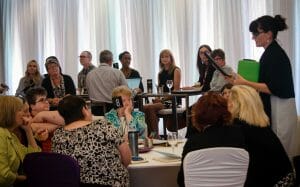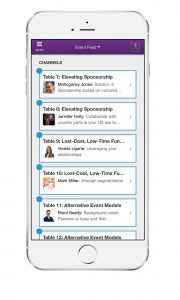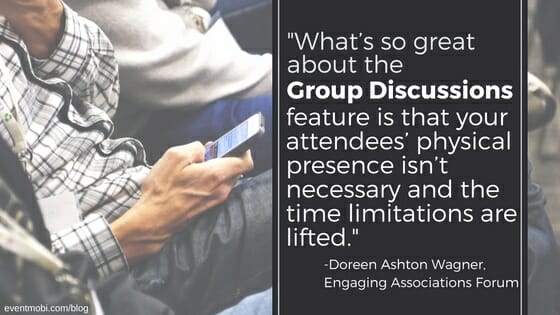No More Flip Charts! Why One Conference Organizer Put the Pen Down For Good
A case study on how one planner used better event design to help the planner and attendees explore their shared ideas during and after the event. Participatory sessions offer tremendous value for conference attendees. They help eventgoers work through professional problems, find solutions, and ultimately benefit from the collective knowledge of the group. In the past, flip charts were used to collect these ideas. But after the session is over, the papers get rolled up, left behind, and forgotten about. For the attendees and organizers, that’s conference value left on the meeting room floor.

Doreen Ashton Wagner wanted more for her event. So when it came time to plan the final conference session of her two-day program, she gave pause. Her conference, Engaging Associations Forum, was in its third year and in keeping with the theme of her event: to engage her participants, she was looking for a different spin on the same old participatory session. That’s when she came up with the idea to host a Hackathon-style session. Borrowed from the tech space, she wanted to create a collaborative, focused knowledge dump. This was a way for her participants (most of whom were in their 40s and 50s) to share their ideas, thoughts, questions, and concerns about a topic of their choosing. It was also a way to gain access to what others were chatting about and take those learnings home with them at the end of the day.
In the past, these sorts of sessions were done manually. Ideas were crowdsourced in the room, written on a flip chart, and voted on by a show of hands. Discussions happened in small groups and the loudest voice at the table generally dominated the conversation.
Out with the Old

For Ashton Wagner, it was time to go digital. She ditched the flip chart and used her mobile event app’s live polling capabilities to allow attendees to vote on predetermined discussion topics during the event. Before the Hackathon session started, she chose the top six topics and assigned two tables for each theme. This saved time and made sure the group size was manageable for face-to-face discussion.
Next, she used the Group Discussions feature in the app as a collaborative digital notepad. Each member of the group could type their thoughts, questions, concerns, and solutions into the discussion group. This made the process democratic and removed the need for a single notetaker. This feature really leveled the playing field of participation opening up the discussion group to more introverted attendees and people more comfortable writing than speaking.
When it came time to present each group’s findings, Ashton Wagner pulled up each individual Group Discussion thread on a big screen, so the group could see what was talked about. Attendees could also follow along in the app. She was even able to access the discussion threads post event, as were attendees, so they could take all that they learned with them home without overloading their suitcase.

Meeting the Event Objective
Ditching the flip chart was the right choice for Ashton Wagner. Not only was using the app a more cost-effective solution than renting audience response hardware from her AV supplier, but using in-app features like Group Discussions allowed her to extend the discussion beyond the actual time of the event. In addition, if her attendees left the room to grab a bite to eat or a thought struck them on a break, they could still contribute to the Group Discussions. “What’s so great about the feature is that your attendees’ physical presence isn’t necessary and the time limitations are lifted,” says Ashton Wagner. “All of these things contribute to getting maximum engagement which is the primary objective of the event.”
Using Live Polls and Group Discussions as part of Engaging Associations Forum’s session content also encouraged greater engagement and adoption of the event app and led to Ashton Wagner’s best experience with an event app provider to date. And it satisfied the organizer’s objectives of innovating, trying new things, and engaging participants.

“Our event is a platform to try new things,” says Ashton Wagner’s second-in-command, Meagan Rockett. “As long as we’re pushing things forward with new ideas, new things, new platforms, then we’re achieving our goal of making it easier for people to engage.”
Her only regret? Not using the audience response and engagement features more! “It would be awesome to use these features in even more sessions next year, and even post-session where people can ask and have questions answered by the speaker or the panel,” says Rockett. “There are just so many ways you can use it!”
What’s Next?
- Curious about how you could use Group Discussions at your next event? Download this Implementation Guide for ideas
- If you love the idea of designing the event experience around crowdsourced content, check out this blog post